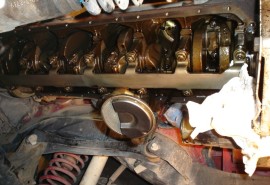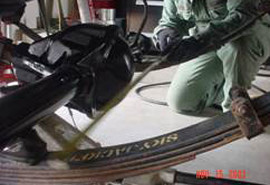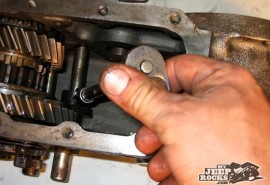Jeep Articles & News
The Phonetic Alphabet – Why is it important for Ham Radio Operators to know
The “International Phonetic Alphabet” (IPA) that is used today has a history that goes back to the early days of radio and was formally adopted in 1927 by the The International Telecommunication Union (ITU). The alphabet has evolved since it was first adopted until what is currently used today.
Military, aviation, maritime, law enforcement, Amateur Radio, as well as other entities all use phonetic alphabets. With the exception of a large number of American law enforcement agencies, most of the world now uses the current form of the International Phonetic Alphabet.
The reason the IPA is used is to make sure messages are clearly understood.
By using a standardized alphabet, a mind that has learned it will understand the unique sounds of the words even in poor receiving conditions. Here is an example of a radio transmission where the alphabet is vital.
The atmospheric conditions is causing a lot of static as well as the one operator is working under a canopy in the pouring down rain:
“This is Kilo Juliet 6 Golf Alpha Charlie.. I am unable to copy your call sign. Please repeat”
“My call sign is November 6 Uniform Juliet Mike. Do you copy over?
“This is Kilo Juliet 6 Golf Alpha Charlie.” I copy November 6 Uniform Juliet Mike. Is that correct?”
“Affirmative Kilo Juliet 6 Golf Alpha Charlie., that is correct.”
Although this is a simple example, it could have been more critical. For example, If this was taking place a command post where a major earthquake just happened and information was being relayed about the number of casualties, rescue equipment needed, and etc. That information is critical to be accurate.
Radio operators who have learned and used the Phonetic Alphabet know instinctively What letters the words correspond with. When a operator uses any other word for a letter, the receiving operator must stop and think to put the word with letter.
A lot of old time Hams use any word they want to represent the letter they are referring to. An example might be:
“My call sign is “Need 6 Underwater Jeep Mechanics”
The receiver will probably need it repeated at least one more time to get it right. If the ham operator would have used the IPA, the receiving operator would have had an easier time writing down the information transmitted.
Here is a chart of the letters with the corresponding words:
| Letter | phonetic letter | Letter | phonetic letter |
| A | Alpha | N | November |
| B | Bravo | O | Oscar |
| C | Charlie | P | Papa |
| D | Delta | Q | Quebec |
| E | Echo | R | Romeo |
| F | Foxtrot | S | Sierra |
| G | Golf | T | Tango |
| H | Hotel | U | Uniform |
| I | India | V | Victor |
| J | Juliet | W | Whiskey |
| K | Kilo | X | X-ray |
| L | Lima | Y | Yankee |
| M | Mike | Z | Zulu |
| 1 | Wun | 6 | Siks |
| 2 | Too | 7 | Seven |
| 3 | Tree | 8 | Ait |
| 4 | Fower | 9 | Niner |
| 5 | Fife | 0 | Zeero |
It is important the everyone who uses a two way radio learn the International Phonetic Alphabet. It is not hard to learn.
Once you familiarize yourself with it, have the above chart handy, and start randomly spelling words you see. Words you see while online, in a book, the newspaper, wherever. Not every word you see of course, but randomly. It is actually kind of fun and challenging. In no time at all you will master it and be a better and more effective communicator.
Ready to get your ham license?
It’s easy, and there are plenty of study guides. You can take a practice test online and then find an amateur radio license exam near you. Often the clubs that offer exams will also offer classes. Many of us are using these inexpensive radios which are available on Amazon:




